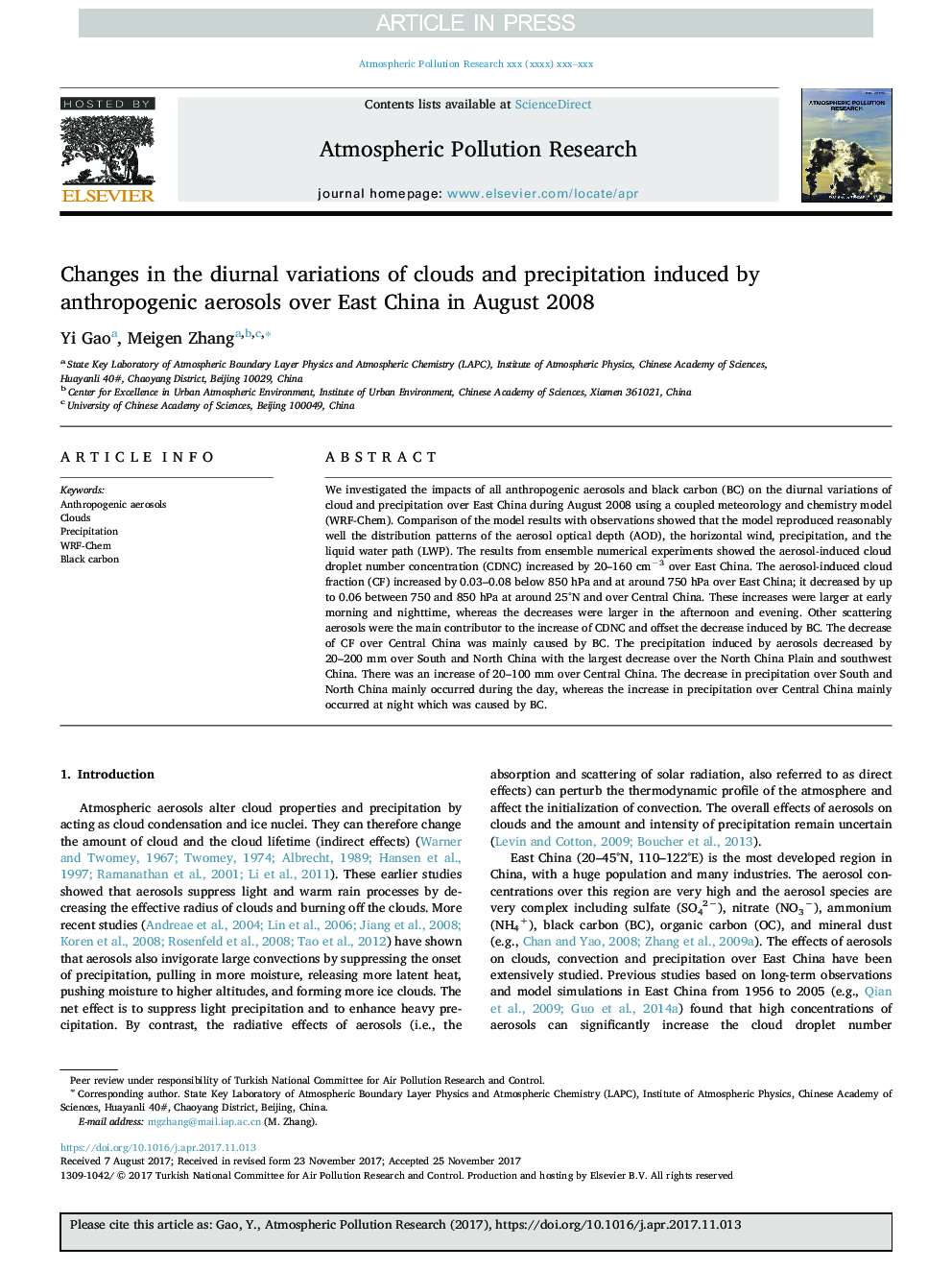| Article ID | Journal | Published Year | Pages | File Type |
|---|---|---|---|---|
| 8862636 | Atmospheric Pollution Research | 2018 | 13 Pages |
Abstract
We investigated the impacts of all anthropogenic aerosols and black carbon (BC) on the diurnal variations of cloud and precipitation over East China during August 2008 using a coupled meteorology and chemistry model (WRF-Chem). Comparison of the model results with observations showed that the model reproduced reasonably well the distribution patterns of the aerosol optical depth (AOD), the horizontal wind, precipitation, and the liquid water path (LWP). The results from ensemble numerical experiments showed the aerosol-induced cloud droplet number concentration (CDNC) increased by 20-160 cmâ3 over East China. The aerosol-induced cloud fraction (CF) increased by 0.03-0.08 below 850 hPa and at around 750 hPa over East China; it decreased by up to 0.06 between 750 and 850 hPa at around 25°N and over Central China. These increases were larger at early morning and nighttime, whereas the decreases were larger in the afternoon and evening. Other scattering aerosols were the main contributor to the increase of CDNC and offset the decrease induced by BC. The decrease of CF over Central China was mainly caused by BC. The precipitation induced by aerosols decreased by 20-200 mm over South and North China with the largest decrease over the North China Plain and southwest China. There was an increase of 20-100 mm over Central China. The decrease in precipitation over South and North China mainly occurred during the day, whereas the increase in precipitation over Central China mainly occurred at night which was caused by BC.
Related Topics
Physical Sciences and Engineering
Earth and Planetary Sciences
Atmospheric Science
Authors
Yi Gao, Meigen Zhang,
